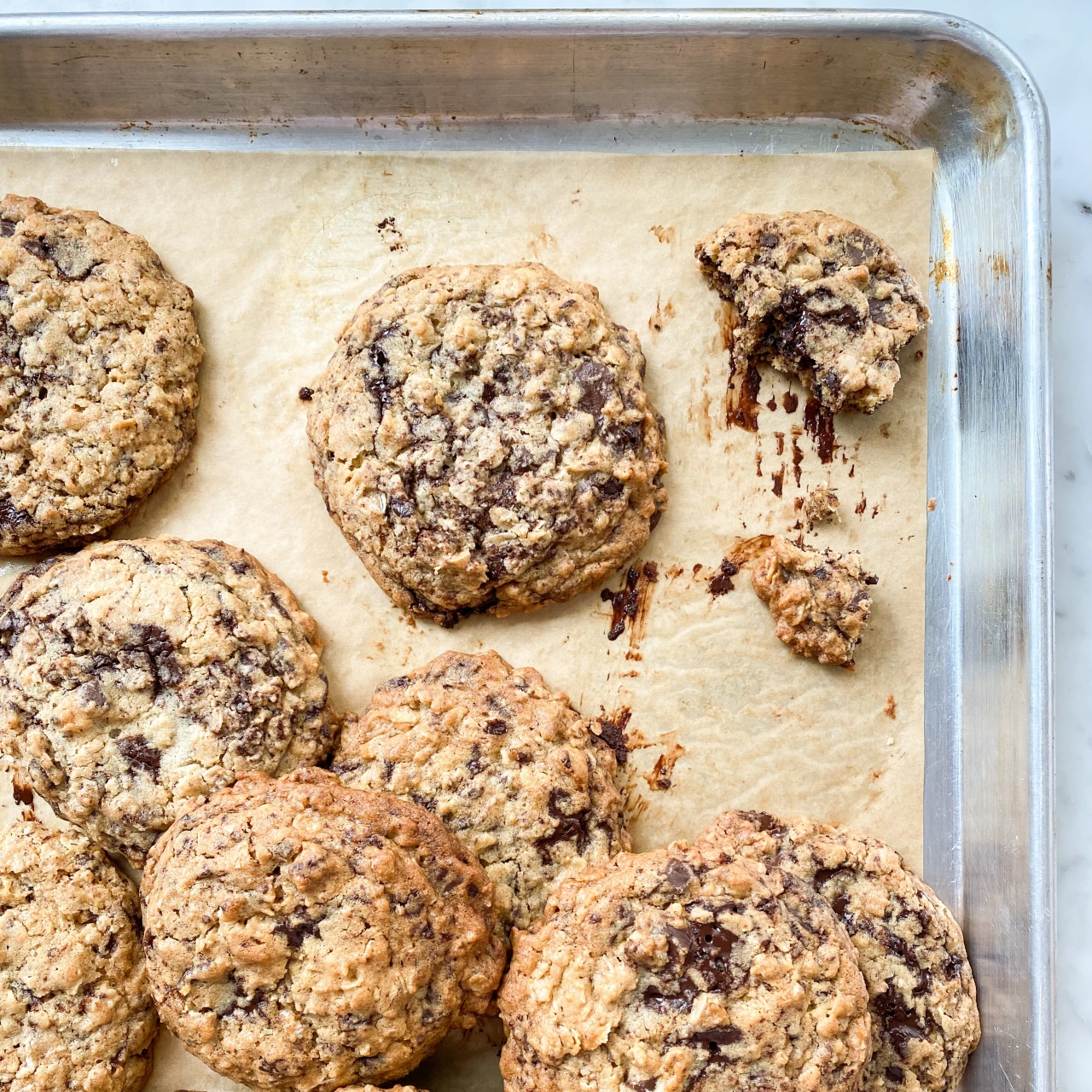
Aug 17, 2022
News

I bake a lot of different delicious pastries, but cookies are a true go-to all year round. They are easy, adaptable, and reliably crowd-pleasing. Whether you’re just getting started in the kitchen, or consider yourself a baking pro - I’m excited to share my tips for getting the best cookies, every time. Plus - three of my favorite cookie recipes I can never make enough of.
1. Portioning the Cookie Dough
If you want your cookies to bake evenly, the best place to start is making sure they’re portioned evenly, too! In culinary school, some chefs chanted the mantra: “If it looks the same, it cooks the same” - and that’s definitely true for cookies. Keeping even sizing will ensure that your cookies bake and brown evenly - and will help ensure a more reliable doneness for the overall batch.
For drop cookies, like my Peanut Butter Oatmeal Chocolate Chip, I love to use a cookie scoop (or an appropriately sized ice cream scoop). This ensures that each cookie is the exact same size, and also gives it a nice rounded shape, so I don’t have to manually roll the dough into balls before baking. My most used cookie scoop sizes are ¼ cup and 2 tablespoon size scoops. If you don’t have a good scoop, use volume measures to carefully measure the first portion of dough, then aim to make the others match it as closely as possible.
For icebox cookies, like my Lemon Sable Cookies, I roll the dough into a log shape, then place it into parchment paper. You can use the parchment wrapped around the log to help refine the shape. Sometimes I hold the paper taut and use a bench scraper to apply pressure to the soft dough. Since it is wrapped inside the paper, the pressure gently elongates the log and rounds out the log without having to physically touch it with your hands. Be sure icebox cookies are well-chilled before you slice, and use a sharp knife when slicing. I am careful with the first cookie I cut - then I use it as a guide for the thickness of the remaining slices.
2. Yes, Room Temperature Really Is Important
Since cookies are so easy to make, it may be tempting to skip a step like bringing ingredients to room temperature so you can be dunking something sweet in milk a lot faster. But when a recipe calls for room temperature ingredients, it’s worth it to pay attention. Room temperature ingredients will combine easier and more quickly, producing the ideal texture of the final dough and helping to prevent issues like excessive spreading, wonky shaped cookies, and uneven baking. Luckily, I have easy tips if you forget to leave your ingredients on the counter the night before.
For butter: Place a stick of butter, still wrapped in it’s paper wrapping, into the microwave. Microwave it for 7-10 seconds, then rotate the stick to sit on one of it’s other sides, and microwave for 5-7 seconds more. It will be perfectly room temperature/softened!
For eggs: Place eggs in a bowl and cover with warm water. Let sit for 10 minutes - this will help take the chill off the eggs and bring them to room temperature quickly!
3. It’s All About the Stagger
A lot of cookie recipes will tell you to arrange the cookie dough in staggered rows on the baking sheet - but why? Yes, it helps to fit a few more cookies onto the baking sheet, and it also reduces the risk of cookies spreading so much that the edges start touching each other while baking. But the main reason is even air distribution. Staggering the cookies ensures that the oven’s heat is fully - and evenly - circulating around the baked good. This helps promote even baking and equal levels of browning, no matter if the cookie is on the outside edge, or in the center of the baking sheet.
4. Nailing the Perfect Bake
Cookies are one of those things that are almost always better a little under-baked. It helps soft cookies (like shortbread) stay soft, chewy cookies (like my Cardamom Snickerdoodles) stay chewy, and cookies with gooey ingredients (like caramel or chocolate) stay moist. I can offer some general advice: look for cookies to brown around the edges - but it’s ok if they are more pale in the center. But since every cookie is a little different, I also encourage you to take note of the visual cues your recipe provides. Does the recipe say the cookie will become golden brown? Or does it say it won’t brown much, instead look for it to appear “set”? These cues can be really helpful in determining whether the cookie needs that one extra minute more. But since the general rule is cookies will be best a liiiiittle bit under, when in doubt, take them out!
5. Customizing Your Creations
One of my personal favorite things about cookies is how adaptable they are. You can easily adjust the ingredients in your favorite cookie to suit your tastes, the season, or the favorite flavors of the recipient! Take the yummy recipes I’m including with this post - they are all based on classic cookies I love, with an additional flavor (or two!) to make them extra special. I added peanut butter to my favorite oatmeal chocolate chip cookie for a mashup of three classics, all in one. I infused the sugar for buttery sable cookies with lemon for a juicy punch of flavor. And I swapped out the usual cinnamon in snickerdoodles for a cardamom, for a warm twist on a super comforting cookie. The sky’s the limit - try adding different extracts (or subbing your favorite flavorful booze for the extract, instead), citrus zests, spices, seeds, chopped nuts, dried fruit, chocolate, or different kinds of crushed cookies or candy. There’s as many possibilities as you can dream up!